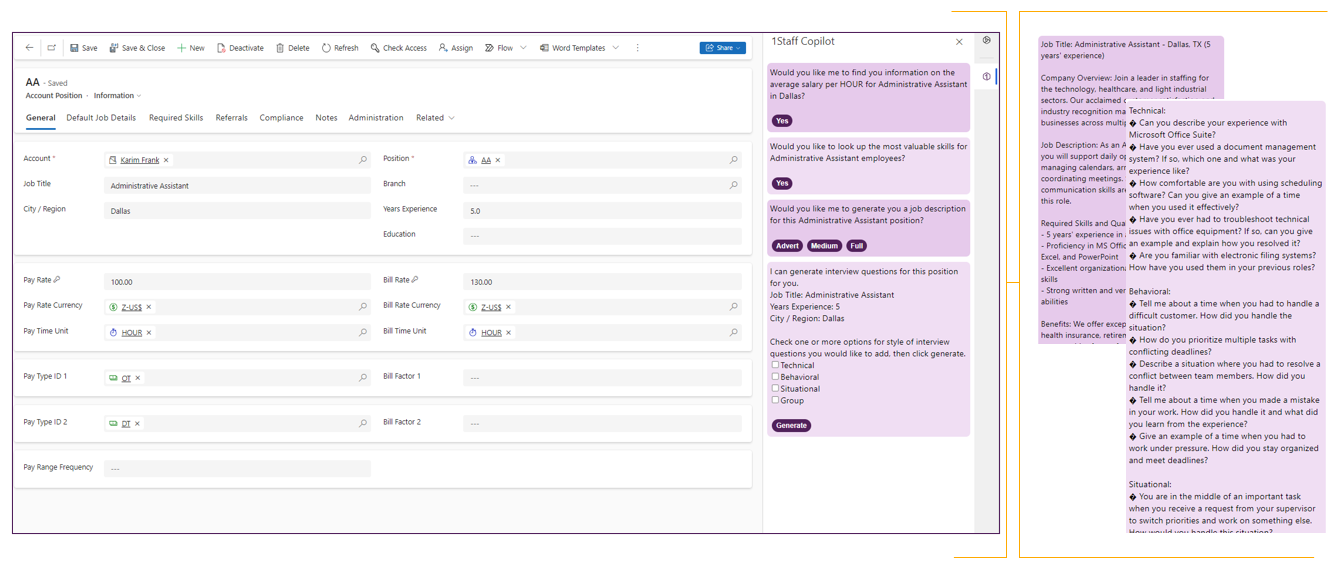The Top 10 Keys to Successful Integration Between Front and Middle-Back Office Systems for Staffing Agencies.
In the ever-evolving world of staffing and recruitment, seamless integration between front office and middle-back office systems is paramount for success. While it's understandable that companies often prioritize their front office operations due to their direct impact on client acquisition and revenue generation, neglecting the back office can have serious repercussions.
Failing to allocate sufficient focus, energy, and resources to the middle-back office functions such as time capture, client billing, collections, payroll, and compliance can lead to a range of negative impacts on the business. These include inaccurate financial reporting, delayed invoicing and payments, compliance violations, decreased employee satisfaction due to payroll errors, and ultimately, tarnished client relationships. Moreover, inefficient back office processes can hinder scalability and growth, as manual and disjointed workflows become increasingly costly and unsustainable as the business expands.
Neglecting the back office can undermine the overall health and sustainability of the company, highlighting the critical need for a more balanced attention to both front and middle-back office operations. Professional Advantage understand the challenges and opportunities staffing agencies face when it comes to integrating their CRM and applicant tracking systems into the middle and back office operations.
To help staffing agency owners and senior decision-level executives better understand how to streamline their operations and maximize efficiency, here are the top 10 things to consider for a successful integration:

Clear Objectives and Strategy:
Start by defining clear objectives for the integration process. What are your agency's specific needs and goals? Develop a strategy that aligns with these objectives to ensure a focused and efficient integration effort.

Comprehensive Data Mapping:
Conduct a thorough analysis of the data flow between front and middle-back office systems. Map out the data fields, formats, and processes to identify potential integration points and ensure seamless communication between systems.

Error Management:
Pay close attention to the “unhappy day” scenarios where incorrect or missing data can cause a dataflow to fail. And ensure full and proper roll-back occurs, including in the event of a broader system failure.

Customization and Configuration:
Tailor the integration to meet the specific needs of your agency. Customize workflows, data mappings, and business rules to ensure that the integrated systems work seamlessly together and support your unique processes.

Data Quality and Cleansing:
Prioritize data quality and cleansing efforts to prevent errors and inconsistencies during the integration process. Identify and resolve duplicate records, missing data, and formatting issues to maintain the integrity of your data across systems.

Scalability and Flexibility:
Plan for scalability and flexibility to accommodate future growth and changes in your agency's operations. Choose a solution that can scale with your business and adapt to evolving requirements without significant disruption.

User Training and Adoption:
Invest in comprehensive user training and adoption programs to ensure that your staff can effectively use the integrated systems. Provide hands-on training, documentation, and ongoing support to empower users and maximize the benefits of the integration.

Security and Compliance:
Implement robust security measures to protect sensitive data and ensure compliance with industry regulations such as GDPR and HIPAA. Encrypt data transmissions, enforce access controls, and regularly audit system activity to mitigate security risks.

Performance Monitoring and Optimization:
Monitor the performance of your integrated systems regularly and optimize processes to maximize efficiency and minimize downtime. Use KPIs and analytics to identify bottlenecks, optimize workflows, and improve overall system performance.

Continuous Improvement and Innovation:
Embrace a culture of continuous improvement and innovation to stay ahead of the curve in the staffing and recruitment industry. Regularly evaluate new technologies, trends, and best practices to optimize your integration strategy and drive business success.

More from the blog
Frequently Asked Questions about Microsoft 365 Copilot
In March 2023, Microsoft announced the private preview of Microsoft 365 Copilot. Copilot combines into a single system the power of next-generation AI with the richness of individual user data—calendar, emails, chats, documents, meetings, and more—in Microsoft Graph, plus the Microsoft 365 apps that people use every day. And it does so within Microsoft’s existing commitments to data security and privacy in the enterprise.
Read more...
Microsoft AI & 1Staff Copilot
Microsoft Copilot is one of the most powerful and embedded generative AI platforms available in the world today.
Copilot uses intelligent natural language technology to create AI-powered experiences that help your people understand data context, speed up repetitive tasks and make better decisions. 1Staff Copilot takes that a step further with in-flight user-guidance to augment a recruiter’s day and put people in jobs faster.
1Staff Copilot powered by Microsoft